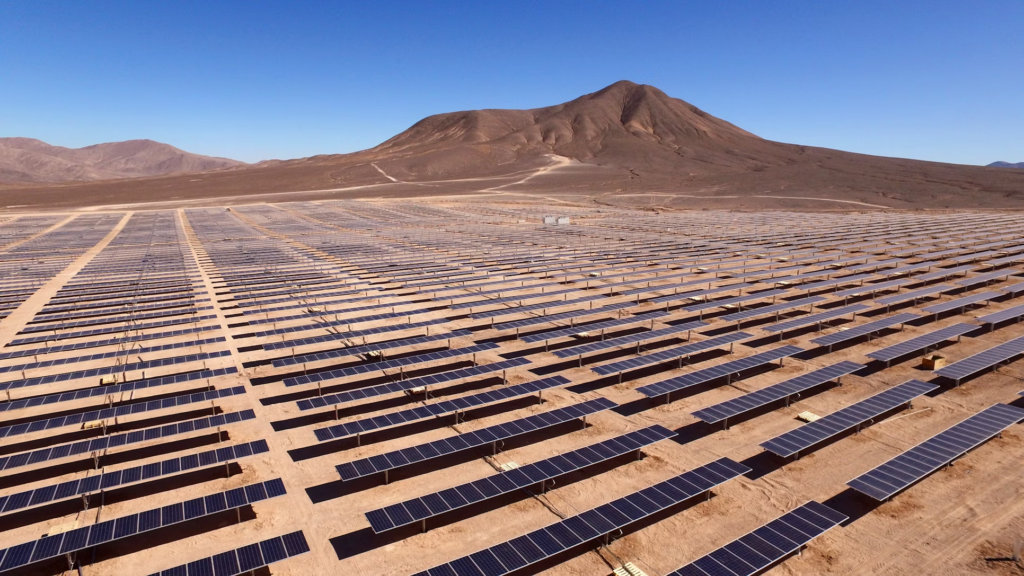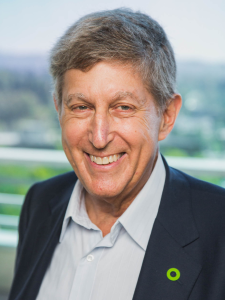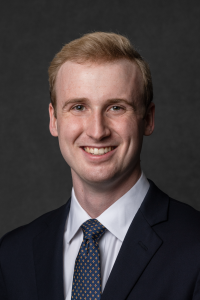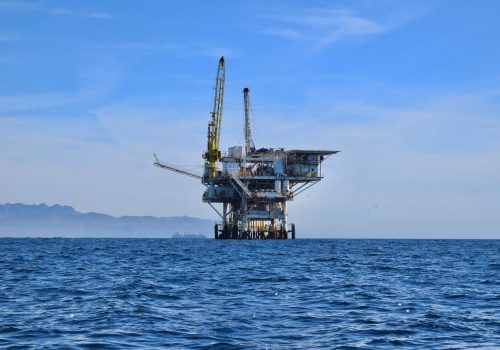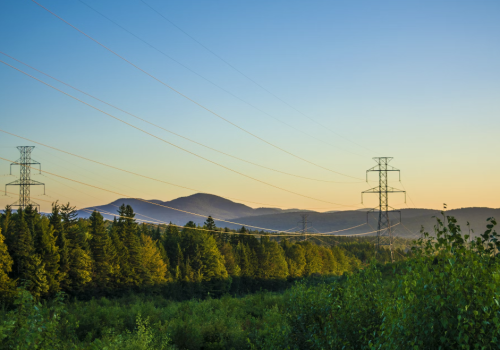The International Energy Agency’s (IEA) analysis of commitments to reduce carbon emissions by 2030 made both before and at the United Nations Climate Change Conference (COP28) concludes that the world is on a path to achieving only one-third of the reductions in carbon emissions needed to limit global warming to 1.5 degrees C.
Achieving the needed reductions, according to the IEA, requires reducing fossil fuel emissions and tripling clean energy investments. The need for increased financing is even greater in emerging markets and developing economies. Current investment in clean energy in these markets is around $260 billion per year, but the IEA concludes that around $2 trillion a year must be invested by 2030.
STAY CONNECTED
Sign up for PowerPlay, the Atlantic Council’s bimonthly newsletter keeping you up to date on all facets of the energy transition.
Reducing emissions in developing countries is critical to achieving the goal of net-zero greenhouse gas emissions by 2050. Although developing countries have contributed a very low percentage of historical greenhouse gas emissions, today, they emit nearly half of all greenhouse gas emissions and one-third of energy sector emissions. Failure to provide the needed finance would make achieving the 1.5-degree goal almost impossible.
Historically, the World Bank Group and other multilateral development banks (MDBs) have played the principal role in financing investment and providing guarantees to developing economies. They have supported catalytic projects, built capacity, provided grants, loans, and equity financing and guarantees to the poorest countries. They also developed the concept of blended finance where the public and private sector work and invest together.
Despite these important results, however, the MDBs have not been able to attract a significant level of private investment in developing countries. Their processes are too slow, their financial regulations too narrow, and their bureaucracy too great to attract the needed trillions of dollars of investment that governments cannot afford and that only private investors can provide to reach emission reduction goals. The MDBs are working to reform their processes, but unless they develop innovative new financing structures, their existing structure, mandates, and limitations make it very unlikely that these reforms will sufficiently open the spigot of private investments.
Thus, innovative new approaches and institutions are needed to achieve emission reduction goals. There is a growing consensus that the best way to attract private investment in developing countries is to reduce the real and perceived risks of those investments by providing guarantees at a level that makes projects investment grade in the minds of the private investors. Guarantees provide the most efficient way of leveraging public financing since the cash needed is only the amount necessary to cover expected losses in the investments. Unexpected losses are protected against by balance sheet backups to the cash provided to cover expected losses.
There are many guarantee proposals being considered and implemented. To achieve the needed impact, one or more of the proposals should establish a facility that provides over a ten-year period at least $500 billion in financing guarantees for loans and possibly for equity. Sovereign nations and perhaps very large foundations and private corporations would fund the facility.
This proposal is very ambitious, but not as costly as it sounds. If, for example, the facility concludes that the risk of loss is very high, say 10 percent, the nations providing funding would have to put up $50 billion in cash over a ten-year period, or $5 billion a year. If ten sovereign funds contribute to the facility, each country would have to put up an average of $500 million a year. This is a significant commitment, but a doable amount, particularly given developed countries’ pledges of $100 billion a year in financing to the developing world. Moreover, the facility could ramp up slowly, requiring lower contributions in the early years.
The facility would structure itself to attract private institutional investors by setting up a simple and efficient process of evaluating their investments and approving the guarantees. It would guarantee projects in a portfolio of investments by an investor, setting standards in advance on due diligence, environmental reviews, and involvement of local communities (ESG). Investors would be responsible for conducting due diligence and implementing the standards. The facility would spot check due diligence and implementation, but not conduct its own reviews. It would require a very small fee on investments to raise funds for capacity building in EMDEs.
The facility would comprehensively guarantee all risks necessary to make the project viable, including political and operational risks. It would provide guarantees in the amount necessary to ensure that investors can internally rate a project as investment grade. It would not guarantee currency risks but would work with a partner organization to cover that risk. It would charge interest and fees at very low concessional rates.
This structure would thus allow an investor to make an investment in the manner it normally invests, without additional layers of review, approval, and bureaucracy. Because the guarantees would lower the risk of an investment, investors would be able to provide loans at a much lower interest rate and equity without a premium on return to cover risk. This would lead to more financially viable projects and lower costs to consumers.
Lower interest rates would also significantly contribute to ensuring that the developing world can compete economically since it is cheaper, often much cheaper, in most of the world to generate renewable energy than fossil fuel-based energy. Lower interest rates would also contribute to achieving equity between advanced economies and emerging and developing economies since the cost of investments would converge instead of investments being significantly more expensive in developing countries.
Reaching 2030 carbon reduction targets in developing countries will require support from many different types of financial institutions. Working with Ian Callaghan, the founder of the UK Climate Finance Accelerator, we have proposed, along with co-author George Frampton, distinguished fellow with the Atlantic Council Global Energy Center, a new facility, the emerging market investment compact (EMCIC), that meets all the above criteria. EMCIC or a similar type of facility would complement the financing provided by multilateral development banks and governments and would play a crucial role in enabling developing countries to achieve their carbon reduction goals.
Ken Berlin is a senior fellow and the director of the Financing and Achieving Cost Competitive Climate Solutions Project at the Atlantic Council Global Energy Center.
Frank Willey is a program assistant at the Atlantic Council Global Energy Center.
Meet the authors
Related content
Learn more about the Global Energy Center

The Global Energy Center develops and promotes pragmatic and nonpartisan policy solutions designed to advance global energy security, enhance economic opportunity, and accelerate pathways to net-zero emissions.
